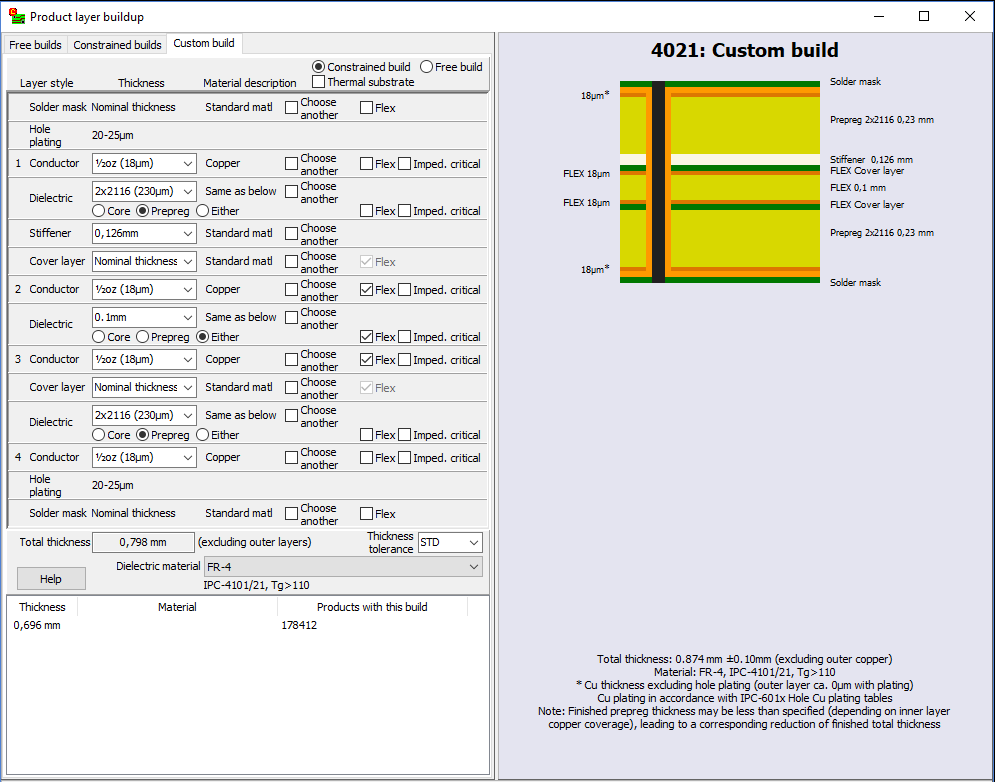Import module improvements
Expanded custom stackup definition
In this version we have expanded the custom stackup definition module to better support flex and rigid-flex boards.
- In addition to the dielectric and copper layers which make up a stackup, it is now possible to define solder mask, cover layer, adhesive/bonding and stiffener layers.
Note: It is not necessary to add cover layer or solder mask layers to a simple stackup, since these layers are already specified by product properties. However, if you have special material or thickness requirements, or are defining a rigid-flex board, then these layers may be specified. - It is now possible to specify the thickness of dielectric and thermal substrate layers in a metal-based board stackup.
- Any individual layer may be marked as a flex layer. This would be used to indicate the layers in the flex region of a rigid-flex board.
Note: With this version you can define two stackup regions for a rigid-flex board: the rigid region (encompassing all layers) and an implied flex region (the layers marked as flex). Our goal is to support up to five stackup regions in the next major release of Macaos Enterprise. - The format for specifying stackup materials has been expanded. The material name and manufacturer may be specified, as well as whether or not the material must be halogen-free. For dielectrics, IPC-slash sheet and minimum Tg may also be specified.
Refresh file during import
If while preparing a product for import, you discover that a layer needs to be updated, you can replace that layer without having to restart the entire import process. Right-click on the file name and choose Replace file.
Note: It is not possible to replace the board/contour file. If this file needs to be updated then the entire product must be imported again.
Gerber job file
If the product you are importing contains a Gerber job file (*.gbrjob) then file linking information and product parameters will be extracted from the file.
Note: The final format of the Gerber job file has not yet been published. Some Gerber job files may not be compatible with the current draft specification. We will update this feature when the final format is published.

